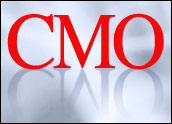
In research conducted among over 200 companies in 2008 for a reported titled “B2B TeleServices and Appointment-Setting: Less Risk, Less Reward?,” Aberdeen Group found that end-user sales organizations relying primarily on external appointment-setting vendors for lead generation realized dramatically lower business results if the vendor deliverable was limited to simple appointments, rather than meetings accompanied by business intelligence.
As part of Aberdeen’s second annual comprehensive study of the B2B TeleServices market, slated for publication in November 2009, new data indicates that this trend continues, and it provides additional details regarding how this particular audience is currently driving sales success.
Among 195 organizations participating in the survey process for “B2B TeleServices: The 2009 Buyer’s Guide,” 73 percent of Best-in-Class companies consider appointment-setting “vital to program success,” a 40 percent increase over all other companies. Plus, there is a significant differential between these two audiences in terms of self-reported, year-to-year changes in key performance indicators (KPIs) that include both Best-in-Class metrics (revenue per sales rep and team quota performance), as well as in other vital areas, such as deal size and controlling/reducing the sales cycle. For all these metrics, appointment-setting devotees are now out-performing other companies.
The Value of the Lead
Without a doubt, the idea of a prefabricated phone or live meeting between a sales rep and their prospect is a highly attractive deliverable for lead generation, marketing and sales managers. At nearly twice the popularity of the next most frequently cited definition of a qualified sales lead, well-prepared appointments naturally appeal to business leaders from Best-in-Class organizations.
Best-in-Class sales organizations value an appointment-specific sales lead primarily under the condition that the meeting is provided by the external partner in the context of supporting business intelligence. On the other hand, the leading Laggard definition of a qualified sales lead is represented by a one-dimensional appointment unaccompanied by additional data. This should motivate lead generation buyers and sales leaders to insist on working with their provider to deliver the more robust, intelligence-enhanced type of appointment deliverable.
Under constant pressure to “do more with less” in a constricted economic and selling environment, the marketing and sales leaders who prefer an appointment as their primary deliverable from outsourced vendors are wise to consider a well-rounded set of capabilities and enablers that providers offer in addition to meetings and appointments. In the next section, these methodologies are described in more detail.
The Partnership-Oriented Relationship
Much as demand generation professionals are succeeding through the acquisition of more data-rich sales leads from their B2B teleservices providers, their vendors are providing additional services and products that align with Best-in-Class performance and serve to complement the value of intelligence-rich appointment deliverables. If an overriding theme emerges from current research, it represents the importance of a transparent and collaborative relationship between buyers and sellers of teleservices-oriented lead generation. As evidenced by the benchmark findings, the same procurers of appointments who have shown strong KPI success on year-over-year metrics also uniformly favor vendor offerings that speak to a partnership-oriented, rather than commoditized, relationship between vendors and lead generation managers.
Additional characteristics of the end-user organizations keenest on acquiring appointments include:
- Budget: Fifty percent of appointment-setting devotees spend more than 30 percent of their entire lead-generation budget on outsourced B2B teleservices, compared with 31 percent of other companies. For 16 percent of this population, vs. 7 percent of other firms, that figure is higher than 70 percent of budget. If this group’s sales performance success can be linked to budgetary planning, then the outsourcing of lead generation to appointment-setting providers is a hallmark of sales effectiveness.
- Pressures: While all respondents report their top business pressures as the need for a larger sales pipeline and better lead quality, devotees of appointment-setting are 81 percent less concerned with reducing cost-per-opportunity, compared with other companies. This is due to the fact that most providers sell appointment-oriented leads on a strict cost-per-meeting basis, often with a satisfaction guarantee. In terms of pricing, the Best-in-Class in Aberdeen’s research for this study spend an average of US$412 per sales-accepted lead, compared with $595 for Industry Average and $663 for Laggards.
- Other services: Fans of appointment setting also put significant emphasis on having their teleservices provider test market messaging, which is a Best-in-Class characteristic (32 percent vs. 10 percent for Average and 4 percent for Laggards). The value of an outsourced provider engaging in this activity lies in the scale that can often be achieved when a team of callers ramps up significant activity on behalf of their customer’s product, ascertaining how popular the potential solution might be within a specified target market.
The data in Aberdeen’s year-to-year research has shown data-driven appointment deliverables to be representative of what Best-in-Class lead generation managers should expect from their vendor partners. Ultimately, the value of appointment-setting to marketing buyers and sales customers remains a complex equation. Best-in-Class companies have exhibited a preference for deploying this particular type of service, but the data shows that additional capabilities and enablers that deepen the vendor/client relationship are a wise investment as well.
Aberdeen’s pending research in November 2009, “B2B TeleServices: The 2009 Buyer’s Guide,” will examine in more depth how top-performing sales organizations achieve success by selecting, managing and measuring their providers and solutions offered in this space.
Peter Ostrow is research director of sales effectiveness at the Aberdeen Group.
















































